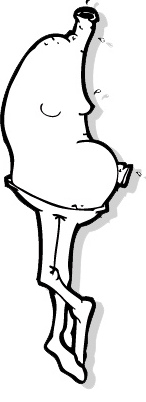Measuring Chickens' Emotional Wellbeing
Saturday, 5 November 2011 by Dr Maytel
Abstract
Miele M, 2011, "The taste of happiness: free-range chicken" Environment and Planning A 43(9) 2076 – 2090
It reminds me of the Posh Nosh episode. I can't help but feel that we've gotten our priorities all wrong.
Happiness is an elusive concept, it brings about ideas of ecstasy, contentment, delight but also health and strength, pouvoir and puissance ... a state of mind and body that is precarious and contingent. How to give form and substance to an idea that is otherwise difficult to conceive? What is happiness for a chicken? What is it like to be a chicken today? Free-range certification offers a powerful interpretation of animals' happiness in the context of farming, and it does so by providing a particular translation of the `natural' in the domesticated environment of farming. But it also offers a specific definition of materiality, in the form of the body of the animal, presented as an expression of her/his quality of life in the juiciness and other organoleptic qualities of her/his flesh or eggs. In this paper, I present the results of an on-farm assessment of the welfare of free-range chickens in the UK, carried out by adopting the Welfare Quality protocol. This is a new evaluation of the on-farm welfare of animals that encompasses many aspects of animals' lives, including animals' negative and positive emotions. It suggests that animals' `happiness' can be measured and can become part of an overall score of welfare, but it also addresses the complexities of the interpretation of the emotional states of animals. I propose that this case contributes to the debate on `material politics' and the invention of animals' happiness can be seen as a political technique that affects human ^ non-human
animal relations.
Miele M, 2011, "The taste of happiness: free-range chicken" Environment and Planning A 43(9) 2076 – 2090
It reminds me of the Posh Nosh episode. I can't help but feel that we've gotten our priorities all wrong.
